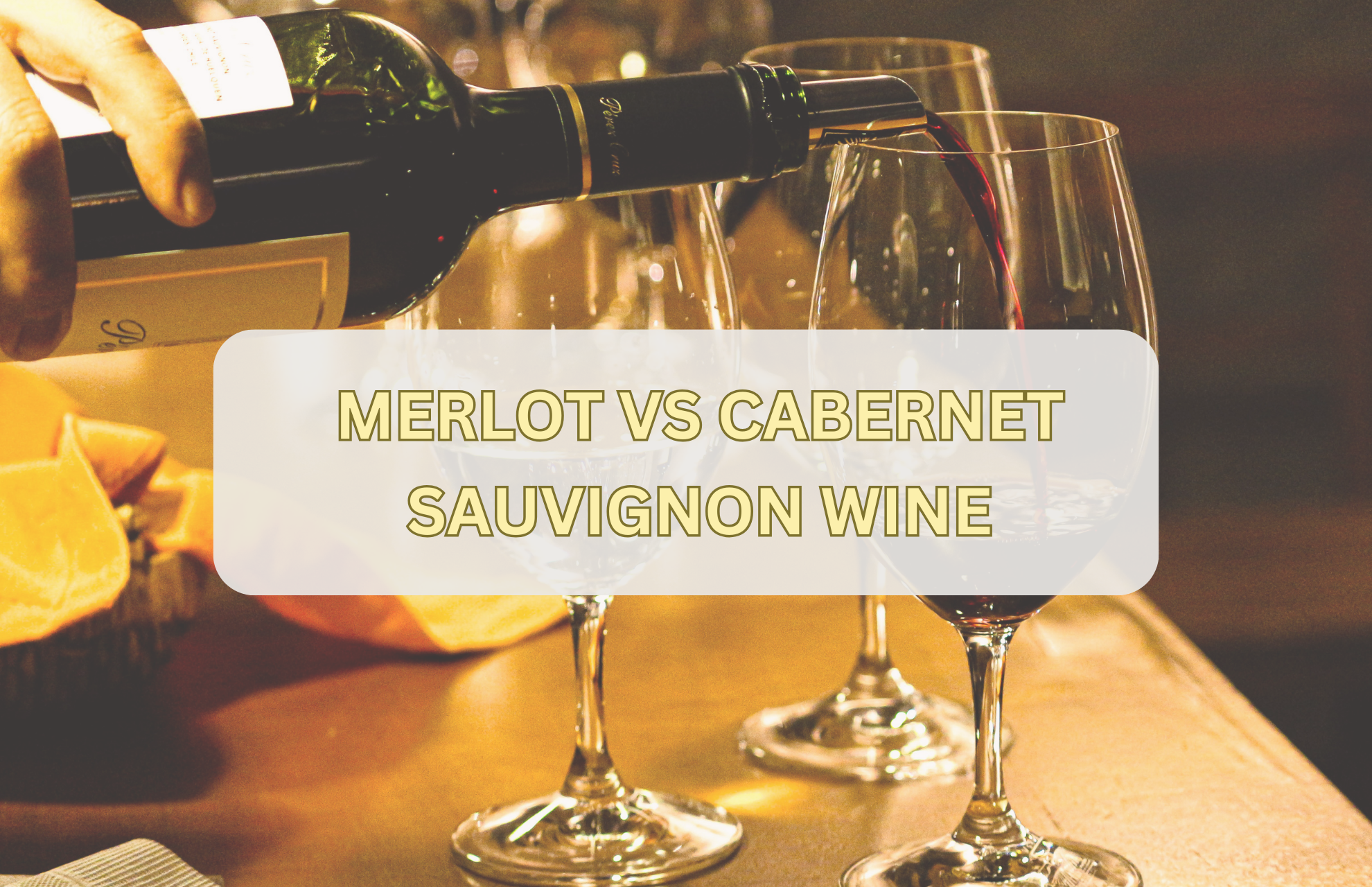When it comes to wine, the age-old debate of Merlot versus Cabernet Sauvignon has divided connoisseurs for years. Both red wines with distinct characteristics, Merlot is often described as smooth and mellow, while Cabernet Sauvignon is known for its bold and intense flavor. In this article, we will explore the key differences between these two popular varietals, and help you decide which one deserves a spot in your wine collection. Whether you prefer a velvety sip of Merlot or a robust pour of Cabernet Sauvignon, get ready to embark on a flavor-filled journey that will leave you thirsty for more.
A Brief Overview
When it comes to red wine, two varietals often come to mind – Merlot and Cabernet Sauvignon. These wines are beloved by wine enthusiasts around the world, and for good reason. Merlot and Cabernet Sauvignon are both red wines that offer unique flavors and characteristics. In this article, we will delve into the world of Merlot and Cabernet Sauvignon, exploring their background, taste profiles, key differences and similarities, famous examples, price range, health benefits, quality factors, and their popularity and global demand. By the end of this article, you will have a better understanding of these two incredible wines and be able to make an informed decision when choosing the right wine for your next occasion.
Background
Merlot and Cabernet Sauvignon both have rich histories that contribute to their popularity today. Merlot is believed to have originated in Bordeaux, France, where it has been cultivated for centuries. On the other hand, Cabernet Sauvignon is a relatively newer grape variety, with its origins also traced back to Bordeaux. Both wines have gained international acclaim and are now grown in various wine regions around the world.
Grapes Used
Merlot and Cabernet Sauvignon are made from different grape varieties. Merlot is primarily made from the Merlot grape, which is known for its soft and velvety texture. Cabernet Sauvignon, on the other hand, is made from the Cabernet Sauvignon grape, which has thick skins and high tannin levels. These grape varieties contribute to the unique characteristics found in each wine.
Origin and History
As mentioned earlier, Merlot and Cabernet Sauvignon have their roots in Bordeaux, France. Bordeaux is known for producing some of the finest wines in the world, and both Merlot and Cabernet Sauvignon have played significant roles in the wine industry. The history of these wines dates back centuries, with winegrowers carefully cultivating these grapes to produce exceptional wines. Over time, the cultivation of Merlot and Cabernet Sauvignon spread to other parts of the world, including California, Italy, Australia, and Chile, among others.
Taste Profile
When it comes to taste, Merlot and Cabernet Sauvignon have distinct flavor profiles that set them apart from each other.
Merlot
Merlot is often described as a medium-bodied red wine with a smooth and supple texture. It is known for its fruity flavors of black cherry, plum, and raspberry, as well as hints of vanilla and chocolate. Merlot wines are generally less tannic and more approachable than Cabernet Sauvignon, making them a popular choice for those who prefer a softer and more mellow red wine.
Cabernet Sauvignon
Cabernet Sauvignon, on the other hand, is a full-bodied red wine with bold flavors and high tannin levels. It is known for its dark fruit flavors like blackberry and blackcurrant, along with notes of cedar, tobacco, and black pepper. Cabernet Sauvignon wines are often described as complex and age-worthy, with a lingering finish that can be quite intense.
Key Differences
While Merlot and Cabernet Sauvignon share similarities as red wines, there are several key differences that set them apart from each other. Let’s explore these differences in more detail.
Primary Grape
One of the main differences between Merlot and Cabernet Sauvignon is the primary grape used in each wine. Merlot is made predominantly from the Merlot grape, while Cabernet Sauvignon is made primarily from the Cabernet Sauvignon grape. The characteristics of these grapes directly influence the flavor profiles of the wines, as mentioned earlier.
Flavor Profiles
Merlot is known for its soft and fruity flavors, with a more accessible and approachable taste. Cabernet Sauvignon, on the other hand, has bolder and more intense flavors, often described as more complex and robust. The fruit flavors in Cabernet Sauvignon tend to be darker and more pronounced, while Merlot exhibits a softer and more mellow fruitiness.
Tannin Levels
Tannins are compounds found in grape skins, seeds, and stems that contribute to the structure and mouthfeel of a wine. Cabernet Sauvignon is known for its higher tannin levels, which result in a more astringent and drying sensation in the mouth. Merlot, on the other hand, has lower tannin levels, leading to a softer and smoother mouthfeel.
Aging Potential
Due to their differences in tannin levels and flavor profiles, Merlot and Cabernet Sauvignon also differ in their aging potential. Cabernet Sauvignon is known for its ability to age gracefully, with the tannins and structure of the wine allowing it to develop complex flavors over time. Merlot, while it can also benefit from some aging, is generally more approachable when consumed in its youth.
Food Pairing
When it comes to food pairing, both Merlot and Cabernet Sauvignon have their strengths. Merlot pairs well with a wide range of dishes, thanks to its softer tannins and fruit-forward profile. It is a great match for roasted meats, poultry, pasta dishes, and even soft cheeses. Cabernet Sauvignon, with its bold flavors and higher tannin levels, pairs well with hearty dishes like grilled steaks, lamb, and aged cheeses.
Similarities
While Merlot and Cabernet Sauvignon have their differences, they also share some similarities that make them both beloved red wines.
Wine Regions
Both Merlot and Cabernet Sauvignon are grown in various wine regions around the world. Bordeaux, France, remains a prominent region for the cultivation of both grapes. Other regions known for producing exceptional Merlot and Cabernet Sauvignon wines include California, Italy (particularly Tuscany), Australia, Chile, and Argentina.
Popular Blends
Merlot and Cabernet Sauvignon are often blended together to create wines that showcase the best qualities of each grape. In Bordeaux, these blends are commonly known as Meritage wines, while in other regions, they may simply be labeled as red blends. These blends offer a balance of fruit flavors, tannins, and structure that can be quite appealing to wine enthusiasts.
Production Techniques
Both Merlot and Cabernet Sauvignon are typically produced using similar winemaking techniques. After the grapes are harvested, they undergo fermentation, where the sugars in the grapes are converted into alcohol. The wines are then aged in barrels, which can contribute to their flavors and aromas. The use of oak barrels is particularly common in the production of Cabernet Sauvignon, as it can add additional complexity to the wine.
Famous Examples
When discussing Merlot and Cabernet Sauvignon, it is impossible not to mention some famous examples of these wines. Here are a few well-known examples of Merlot and Cabernet Sauvignon:
Merlot
- Château Pétrus (Pomerol, Bordeaux, France)
- Duckhorn Vineyards Three Palms Vineyard (Napa Valley, California)
- Château Ausone (Saint-Émilion, Bordeaux, France)
Cabernet Sauvignon
- Château Latour (Pauillac, Bordeaux, France)
- Screaming Eagle (Napa Valley, California)
- Penfolds Grange (South Australia)
Price Range
The price range for both Merlot and Cabernet Sauvignon wines can vary significantly depending on factors such as the region, producer, vintage, and prestige of the wine. Here is a general idea of the price range you can expect for these wines:
Merlot
Merlot wines can range from affordable options starting at around $10 to high-end bottles that can reach hundreds of dollars. The price usually reflects the quality and reputation of the producer, as well as the aging potential and rarity of the wine.
Cabernet Sauvignon
Cabernet Sauvignon wines tend to have a higher price range compared to Merlot. Entry-level bottles can be found for around $15 to $20, while premium and collectible bottles can easily exceed several hundred dollars, or even thousands for the most prestigious examples.
Health Benefits
Moderate consumption of red wine, including Merlot and Cabernet Sauvignon, has been associated with various health benefits. Here are a few potential health benefits of drinking these wines:
Merlot
- Antioxidants: Merlot, like other red wines, contains antioxidants that may help reduce the risk of heart disease and certain types of cancer.
- Resveratrol: Merlot wines, particularly those made from grapes with thicker skins, can contain higher levels of resveratrol, a compound that has been linked to various health benefits, including supporting heart health and reducing inflammation.
Cabernet Sauvignon
- Heart Health: Cabernet Sauvignon wines, with their higher tannin and resveratrol content, have been linked to cardiovascular benefits, including reducing the risk of heart disease and promoting healthy cholesterol levels.
- Antioxidants: Like Merlot, Cabernet Sauvignon is rich in antioxidants that can help fight free radicals and protect against certain diseases.
Quality Factors
Several factors contribute to the overall quality of Merlot and Cabernet Sauvignon wines. Here are a few key factors to consider when assessing the quality of these wines:
Terroir
The concept of terroir, which encompasses the climate, soil, and topography of a wine region, plays a significant role in the quality of Merlot and Cabernet Sauvignon wines. The characteristics of the terroir can influence the grape’s ripening, flavor development, and overall quality of the wine.
Vintage Variation
Vintage variation refers to the differences in quality and characteristics of the wines produced in different years. Factors such as weather conditions and grape-growing conditions can vary from year to year, leading to variations in the quality and style of the wine. It is important to consider the vintage when purchasing and assessing the quality of a bottle of Merlot or Cabernet Sauvignon.
Winemaking Practices
The winemaking techniques used by the producer can greatly impact the quality of the final wine. Factors such as the selection of grapes, fermentation methods, barrel aging, and blending decisions all contribute to the overall quality and style of Merlot and Cabernet Sauvignon wines.
Popularity and Global Demand
Both Merlot and Cabernet Sauvignon have gained significant popularity and global demand over the years. Here’s a closer look at their individual popularity:
Merlot
Merlot has seen a surge in popularity, particularly in the 1990s, thanks in part to its approachable and fruit-forward style. Its smooth and easy-drinking nature has made it a favorite among many wine enthusiasts. Merlot is widely planted in various wine regions around the world and continues to be a popular choice for those seeking a versatile red wine.
Cabernet Sauvignon
Cabernet Sauvignon is often referred to as the king of red wines due to its intensity, aging potential, and incredible flavor profile. It has a dedicated following of wine enthusiasts who appreciate its boldness and complexity. Cabernet Sauvignon is highly regarded in Bordeaux and is also a star player in regions like Napa Valley, where it has gained a strong foothold.
Conclusion
When it comes to choosing between Merlot and Cabernet Sauvignon, personal preference plays a significant role. Both wines offer unique qualities and can complement a wide range of dishes and occasions. If you prefer a softer and fruit-forward wine with less tannin, Merlot may be the ideal choice for you. On the other hand, if you enjoy bold and structured wines with higher tannin levels, Cabernet Sauvignon might be more up your alley. Ultimately, exploring both varieties and expanding your wine palate will allow you to find the perfect wine for you. Cheers!

